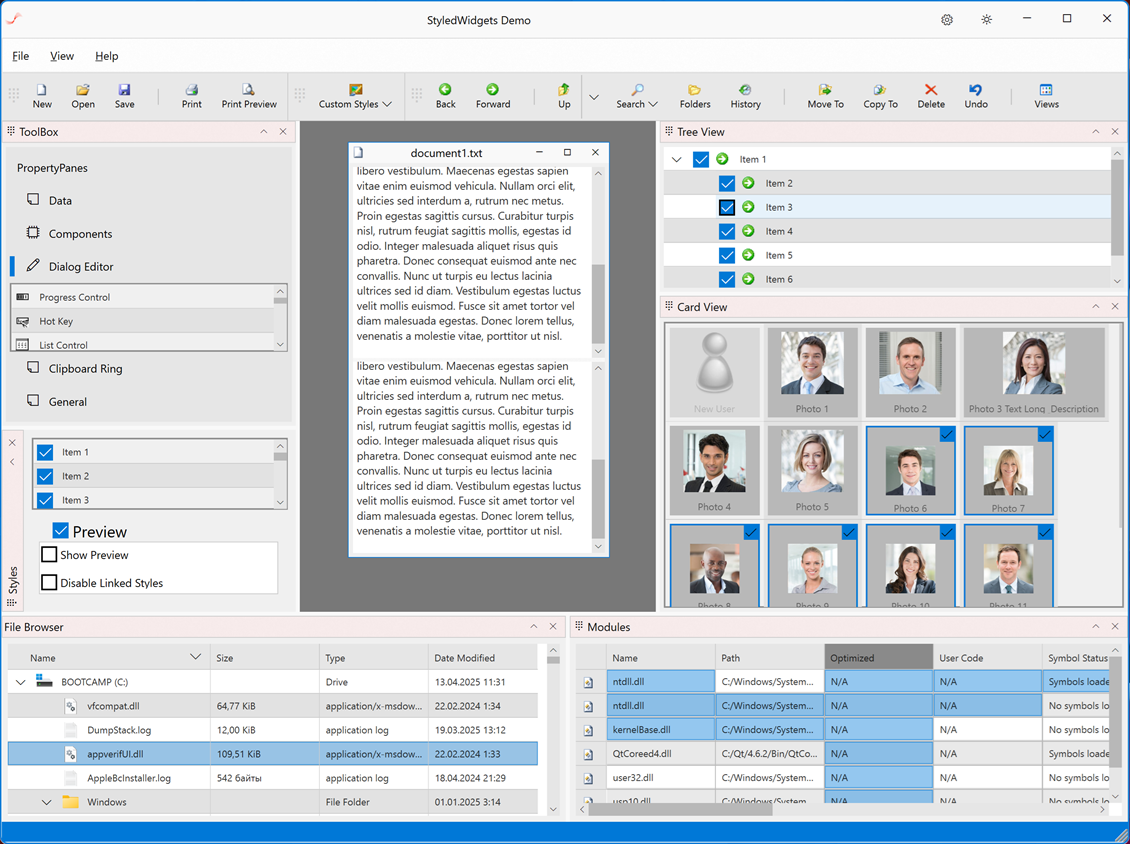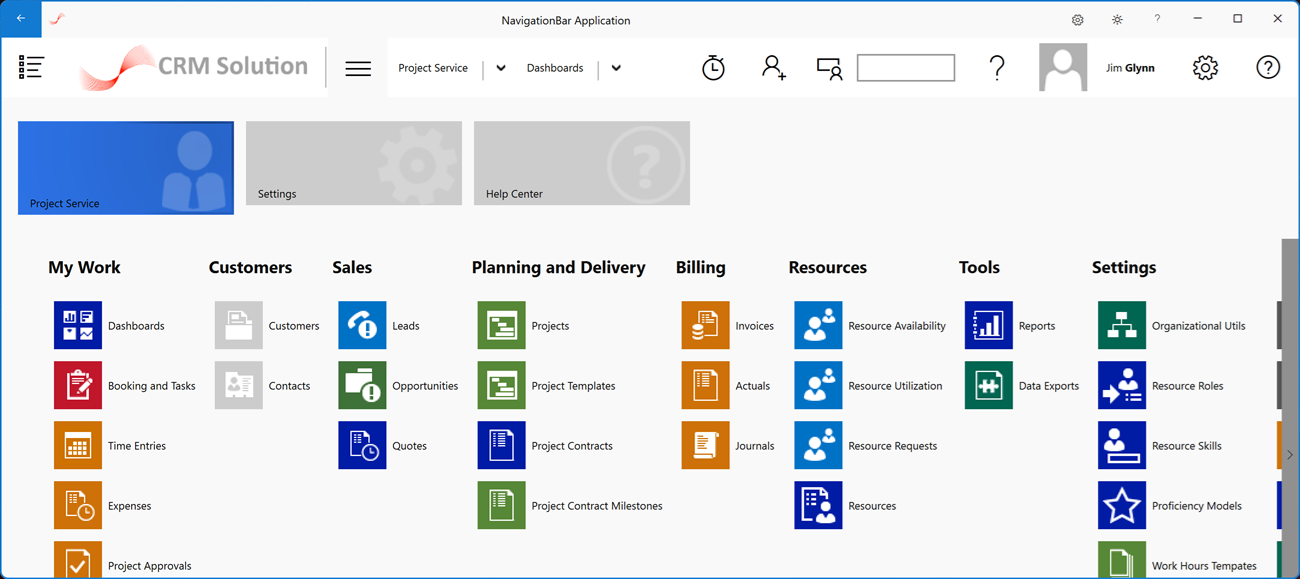 |
We are pleased to announce the release of the beta version of the QtitanNavigationDesignUI 4 component. The long delay in releasing updates was due to the development of a mechanism for creating styles based on the popular Adobe XD tool. Our idea is to move away from manually writing rendering code for QStyle and instead provide the ability to design styles entirely in Adobe XD (Figma support is currently in the final stages of completion). This is now possible without any limitations. You simply design the style in Adobe XD according to a specific template, export the XD file to an XML file using a special utility (dcmake.exe - included in the DC Studio Tool), and then load the resulting XML file into Qt. The XD template is designed so that you can create both dark and light themes or any other color themes directly in Adobe XD. Colors will be exported to QPalette, and during rendering, the active palette group is taken into account — whether it's QPalette::Active, QPalette::Inactive, or QPalette::Disabled. Component states such as Hover, Pressed, or Disabled for the mouse are supported; fonts and metrics are also exported. All these elements are extracted from the Adobe XD document, so there’s no need to define them in the code. It’s enough to implement the design in Adobe XD while following the template.
In addition to the new style, QtitanNavigationDesignUI 4 includes an updated WindowTitleBar class, which allows customization of the title bar for the top-level window. The new WindowTitleBar for Windows is implemented based on WinRT Direct Composition. To use it, you need Qt version 6.7.2 or higher. If you're using an older version of Qt6 or Qt5, the mechanism based on WM_NCCALCSIZE will be used instead. Building requires the use of the Visual Studio compiler, as mingw.g++ does not yet support WinRT compilation. The use of WinRT allows us to achieve support for the Acrylic effect on Windows 10 or 11, just as it works in native .NET applications. For Windows 11, the Mica effect is also available. To enable it, use: Qtitan::WindowTitleBar::setBlurBehindWindowEffect(WindowTitleBar::Mica);
The updated WindowTitleBar includes an additional feature that allows you to add several custom buttons: a theme selection button (light or dark), a settings button, and a back button. These buttons will appear when the new WindowsUI style is in use. For the Linux version, the WindowTitleBar class code contains an important fix for a bug that prevented proper dragging or resizing of the top-level window in the KDE Window Manager. Additionally, in this new version, we have fixed bugs related to rendering in the NavigationView and NavigationEdgeView classes, along with other issues reported by users. The source code for the beta version of QtitanNavigationDesignUI 4 is available in the personal accounts of QtitanNavigationDesignUI and QtitanSolution users. This version is currently only available for Windows, with versions for Linux and MacOS expected to be released by the end of May 2025. |























